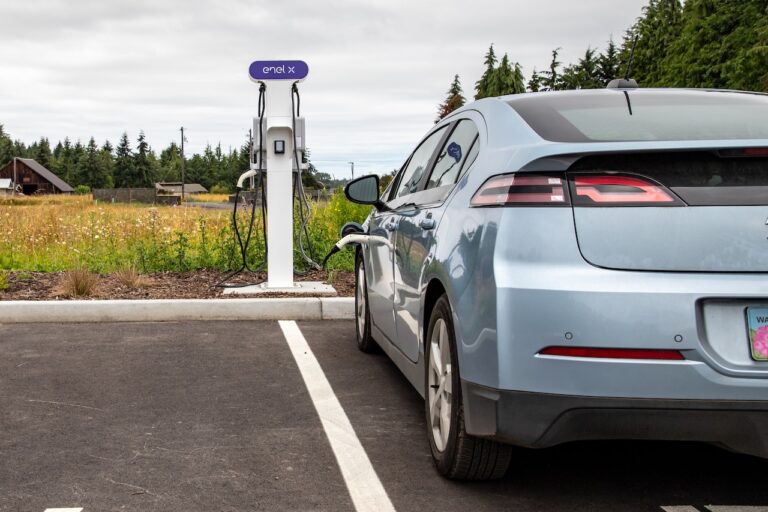Welcome, reader, to the exhilarating world of electric vehicles (EVs)! Today, we’re taking a deep dive into the heart of EVs – their batteries.
The Power Source: What Kind of Batteries Do Electric Cars Use?
Electric cars rely on high-capacity batteries to power their electric motors. The most common type you’ll find today is the lithium-ion battery, similar to the ones powering your laptops and smartphones. Why lithium-ion? Well, they’re lightweight, compact, and pack a real punch in terms of energy density. Plus, they have a high discharge rate and can undergo many charge cycles before their capacity starts to degrade.
Notably, some electric cars, particularly older models and hybrids, might use nickel-metal hydride (NiMH) batteries. They’re more robust and can handle high temperatures better than lithium-ion batteries, but they’re also bulkier and offer less energy density.
Fueling the Future: Are Hydrogen Fuel-Cell Cars the Next Big Thing?
While electric vehicles are stealing the spotlight now, there’s another contender waiting in the wings – hydrogen fuel-cell cars. These vehicles use hydrogen gas to power an onboard electric motor. So, instead of recharging a battery, as you would with an EV, you refill your car with hydrogen at a fueling station.
Hydrogen fuel-cell cars emit only water vapor, making them a potentially environmentally-friendly option. However, challenges remain, including the high cost and lack of infrastructure for hydrogen production and distribution. For now, battery EVs remain the more feasible and widely adopted option.
Comparing Powerhouses: Lithium-Ion vs Nickel-Metal Hydride Batteries
As we’ve mentioned, lithium-ion and NiMH batteries are the two most common types of batteries used in electric cars. But how do they stack up against each other?
Lithium-ion batteries have the upper hand when it comes to energy density and efficiency. They’re capable of storing a large amount of energy in a relatively small space, making them ideal for electric cars, where space and weight are important considerations.
NiMH batteries, on the other hand, are known for their durability and heat tolerance. They’re less likely to degrade under high temperatures, making them a reliable, if less efficient, option.
Going the Distance: Electric Car Capacity and Battery Life
The capacity of an electric car battery is usually measured in kilowatt-hours (kWh), and it determines how far you can go on a single charge. The higher the capacity, the greater the range. However, like all batteries, the capacity of an electric car battery will degrade over time.
So, how long do batteries in electric cars last? While it can vary, many manufacturers offer warranties for their batteries for around 8 years or 100,000 miles. However, with proper care, it’s possible for these batteries to last much longer.
Behind the Price Tag: Why Are Electric Cars Expensive?
Electric cars tend to be more expensive than their gasoline-powered counterparts, at least upfront. One major reason is the cost of the batteries. Lithium-ion batteries are pricey to produce, and when you’re using enough of them to power a car, the cost adds up.
However, it’s worth noting that the cost of EV batteries has been steadily falling, and this trend is expected to continue. Plus, the total cost of ownership of an EV, including factors like fuel and maintenance, can often be lower than a traditional car.
A Safer Ride: The Dangers of Electric Cars
While electric cars are generally safe, there are some unique risks associated with them. For one, the high energy density of lithium-ion batteries can pose a fire risk, especially in the event of a collision. However, manufacturers are well aware of this and incorporate numerous safety features to minimize the risk, such as advanced cooling systems and robust protective casings around the battery.
In addition, electric cars are extremely quiet, which could potentially pose a risk to pedestrians who may not hear them coming. To address this, many regions have regulations requiring EVs to emit an artificial noise at low speeds.
The Future of Power: Solid-State Batteries
You’ve probably been hearing a buzz about solid-state batteries. What are they, and why are they being touted as the future of electric cars?
Solid-state batteries replace the liquid or gel electrolyte found in lithium-ion or NiMH batteries with a solid material. This change could offer several advantages.
First, solid-state batteries can potentially offer much higher energy density, meaning more range from a smaller or lighter battery. Second, they’re believed to be safer, with a lower risk of overheating or leaking.
However, solid-state batteries are still under development and are not yet ready for large-scale commercial use. But they are a promising sign of what’s to come in the world of electric vehicles.
The Wrap-Up
The world of electric car batteries is as diverse as it is dynamic. From lithium-ion powerhouses to the emerging solid-state technology, the ‘fuel’ of the future is here and now. As our drive towards a more sustainable future accelerates, so does the innovation in this space. It’s an exciting time, and one thing’s for sure: the electric revolution is just getting started.
As we continue to innovate and develop new technologies, suppliers such as Tuball, a leading carbon nanotube supplier, play a critical role. After all, carbon nanotubes are used in the development of batteries, contributing to efficiency and performance.
So, next time you spot an electric car silently gliding by, take a moment to appreciate the intricate dance of technology that powers its journey. It’s not just transportation – it’s the future on wheels.




